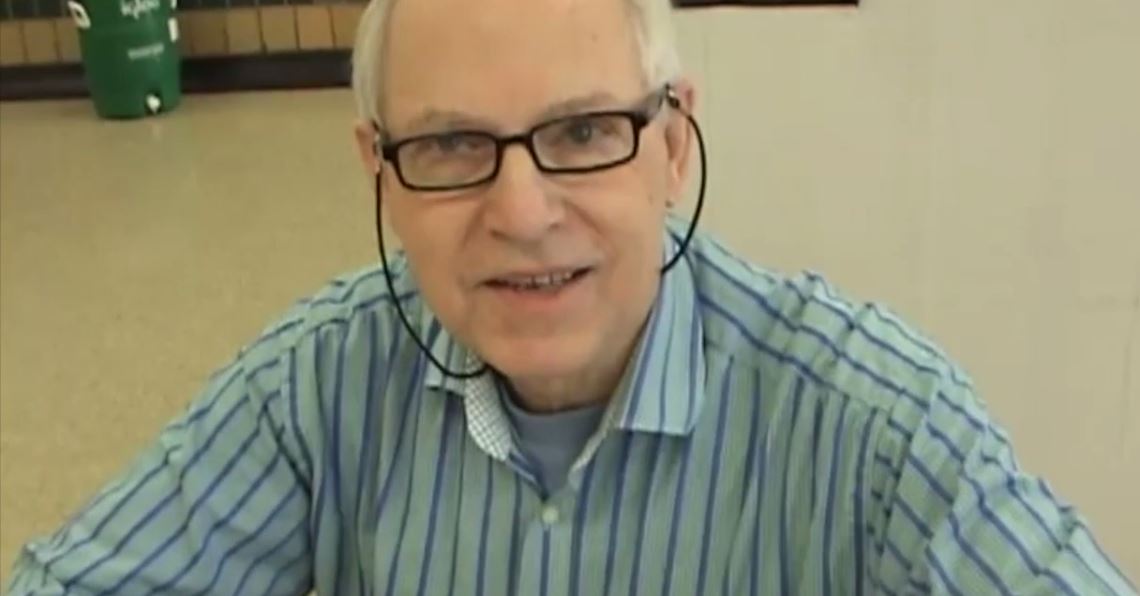by Dale Marie Prenatt
This blog post by UACC intern Dale Marie Prenatt initiates our “UACC Remembers” series on the event Urban Appalachia Lost and Found. Held in 2015, the event opened the photo archives so that UACC friends could record memories as they looked through records of Appalachian Cincinnati. The event was described in a previous blog post by Jeff Dey, Urban Appalachia Lost and Found: An Identification of a Half-Century of Community Photographs. Jeffrey Stec produced the videos in the series.
In this episode, Mike Maloney recalls one of the early UAC sites, the Main Street Bible Center.
To the background of a lively square dance during the UACC “Appalachia Lost & Found” event in 2015, this video begins with Mike Maloney sharing records, photographs, and stories from the origins of the Urban Appalachian movement.
He explains how the first center managed by Urban Appalachians was the Main Street Bible Center, donated by the Archdiocese of Cincinnati in 1964 to founder Ernie Mynatt. Mike shares information and photographs about the activities hosted by the Bible Center and more about the various Appalachian organizations that were founded in its wake.
Mike tells more about his own history and how he and other volunteers came to be involved in the early days of the movement, which created educational and community support structures. He also shares more about the unique philosophical approach to helping people build their lives, which differs from traditional clinical social work, and that this influence is still felt in the work of the Urban Appalachian Community Coalition today.
The History of the Main Street Bible Center
Some of the earliest organizational work for Urban Appalachians occurred at Emmanuel Community Center, the Methodist Settlement House in Cincinnati. However, the first center that Urban Appalachians managed themselves was a storefront given by the Archdiocese of Cincinnati to founder Ernie Mynatt, a Kentuckian dedicated to improving the way of life of Urban Appalachians, in 1964. The storefront became the Main Street Bible Center, located at Main and Woodward Streets in Cincinnati’s Over-the-Rhine neighborhood. At that time, Over-the-Rhine residents numbered 35,000 with many living in tenement houses.
Ernie recruited volunteers who came from all walks of life and included nuns, seminary students, and seminarians who provided activities for students downtown, giving them a safe space to spend time off the streets. Volunteers paid home visits to families and the Bible Center offered camps in the countryside. Some children who attended these outdoor camps had no access to nature in their daily lives and there encountered grass, moss, and butterflies for the first time.
When the Bible Center closed, Cincinnati Appalachian organizations continued under different names. These included Hub Services, United Appalachian Cincinnati, Appalachian Committee of CHRC, the Appalachian Identity Center, the Appalachian Community Development Corporation, Urban Appalachian Council. The Urban Appalachian Community Coalition is the current incarnation.
Appalachian children who suffered poor treatment in the school system had advocates in these Appalachian organizations that worked to improve educational opportunities and to increase graduation rates. After a thirty-year struggle, Oyler School – a school and community center in the Lower Price Hill neighborhood of Cincinnati, was created by the public school system after work by the Urban Appalachian movement and other community partners.
Mike shares that schools like Peaslee Elementary School – now a neighborhood center, and Courter Tech High School – now Cincinnati State Technical and Community College, have played important roles in the history of the movement. Volunteer tutors from varied religious backgrounds have also been important in this history, and Mike shares photographs of college students who were Mennonite missionaries that helped found the Lower Price Hill Community School – now called Education Matters.
Mike’s involvement with the Urban Appalachian movement began when he, too, was a student. He first met Ernie Mynatt as a seminary student around the time that the Main Street Bible Center opened, and eventually left his studies to help with Ernie’s work. He later became the first director of the Urban Appalachian Council in 1974. Mike tells the story that his departure from his studies led the the director of the seminary to prevent other students and seminarians from volunteering at the Main Street Bible Center, where Mike was considered too radical and dangerous an influence.
The volunteers and tutors that Ernie recruited in the early days who supported the work of the Urban Appalachian movement were often young people, not those with training in traditional clinical social work. These volunteers agreed with Ernie’s philosophical approach to bring “heart and guts”, Mike says, in an effort to help people build their lives. The success of this unique approach to social work can be seen in the photographs on display at the event where this video was taken. The approach still influences the work that is continuing today with the Urban Appalachian Community Coalition.
(Editor’s note: the above text includes some corrections to the video, made at Mike Maloney’s request. “Cutter Jr. High School” is corrected to read “Courter Tech High School.” Cutter, which also served Appalachian residents, was in Over-the-Rhine and later became SCPA. Also, the Appalachian Identity Center was neglected and now added to the list of the succession of organizations. The Appalachian Community Development Corporation, which operates the Appalachian Festival, was also added.)


The reunion was a wonderful success. So blessed to be reunited with such amazing people. Let’s do it again
For a long time, those of us who are still in touch talk about having a Bible Center Reunion. I’m in!